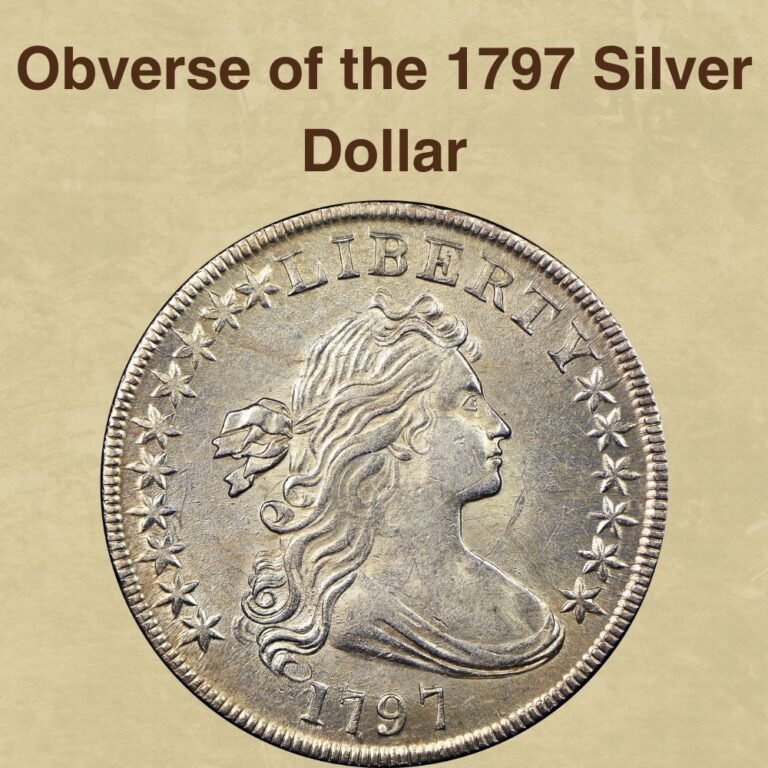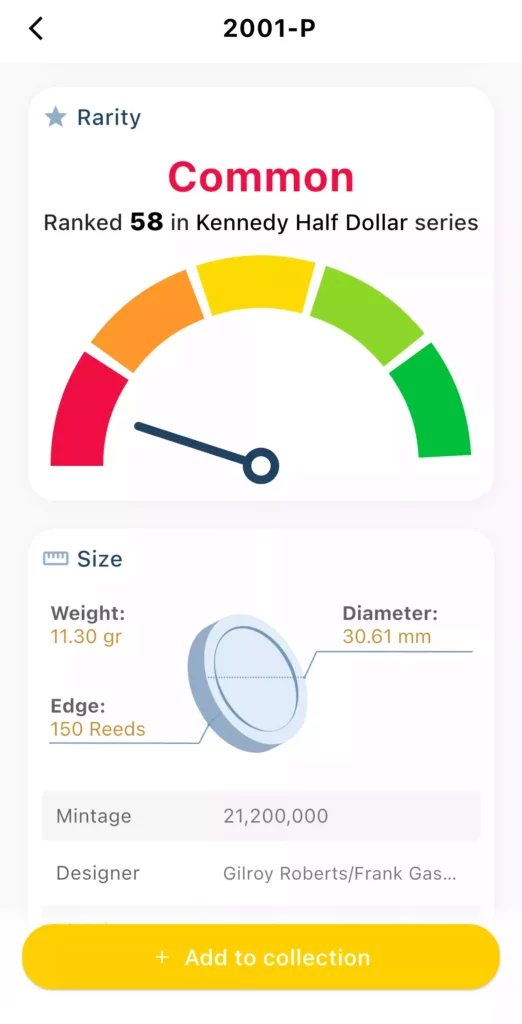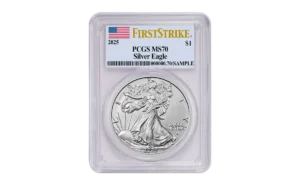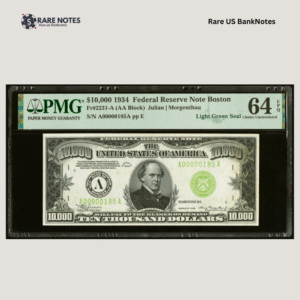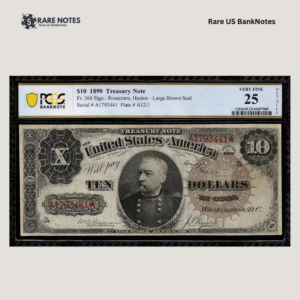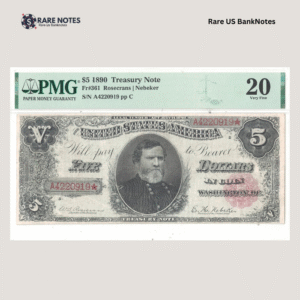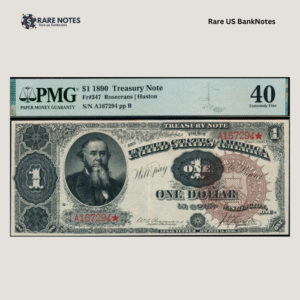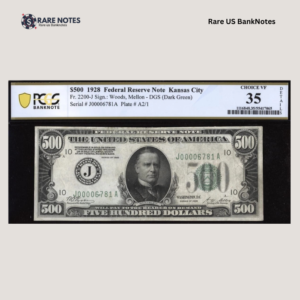The United States half dollar, spanning from 1794’s Flowing Hair design to today’s Kennedy portraits, has produced a remarkable array of minting errors. These anomalies—doubled dies, overdates, off-center strikes, and die clashes—reveal the human craftsmanship and mechanical complexities inherent in coin production across two centuries.
The market accommodates all collectors: cherrypickers hunt circulation for accessible varieties, while serious numismatists pursue rarities commanding thousands at auction.
What follows is a systematic examination of nineteen error categories documented throughout half dollar history. Each entry details diagnostic characteristics, formation mechanisms, authentication criteria, and current market values—equipping collectors with practical knowledge for identifying and evaluating these distinctive pieces.
From Liberty Seated varieties to modern Kennedy issues, these minting anomalies offer tangible connections to the evolving craft of American coinage.
Doubled Die Half Dollar Errors
1. Doubled Die Obverse (DDO) Errors
The Doubled Die Obverse (DDO) error is characterized by duplicate design elements on the obverse side, where letters, numbers, dates, or images appear doubled with both impressions raised to the same height from the coin’s surface.
This creates a distinctive layered effect that distinguishes true DDO errors from other minting anomalies—ejection doubling produces flattened or smeared secondary images at only half the height of the primary design, while double-struck coins show obliterated initial strikes.
The error originates during the die manufacturing process at the mint, where a hub stamp creates working dies through multiple impressions using CNC milling machines across several generations. When the hub becomes misaligned between these successive impressions during the die-making iterations, the resulting working die receives an off-center duplicate image, and this flawed die then imprints the doubled features onto every coin it strikes during production.
Representative examples include the 1974-D Kennedy half dollar DDO, which exhibits prominent doubling on “WE TRUST,” valued at approximately $49 in uncirculated condition. The 1971-D Kennedy half dollar FS-101 variety shows strong doubling on “TRUST” and commands $500 to $850 in uncirculated grades.
The market for DDO half dollars demonstrates significant price variation driven primarily by three factors: the visibility and strength of the doubling itself, the coin’s preservation grade, and the historical context of the variety. While some DDO varieties remain somewhat scarce and appear predominantly in mint sets at high grades, others surface occasionally in circulation, making them accessible targets for dedicated cherrypickers who understand the diagnostic features to examine under magnification.
2. Doubled Die Reverse (DDR) Errors
Doubled Die Reverse (DDR) errors occur when misalignment between successive hub impressions during working die production creates duplicated design elements on the coin’s reverse side.
This happens when the reverse die shifts during master die fabrication—improper hub alignment between multiple required impressions produces overlapping images where letters, numbers, and pictorial features display two complete raised strikes.
Scarcity varies considerably across DDR half dollar varieties—the 1946 Walking Liberty DDR, with pronounced doubling on “E PLURIBUS UNUM” and eagle feathers, is relatively accessible to cherrypickers with over 100 examples known in Mint State grades.
And the 1961 Franklin proof DDR represents exceptional rarity, with only 66 certified examples as of 2011, mostly in PR66 or lower, and only 10 achieving PR67 with none graded finer. Recognized as one of the most dramatic Franklin varieties, it features strong doubling on “E PLURIBUS UNUM,” “UNITED STATES,” and “HALF DOLLAR,” with only one PR67 Cameo certified.
Collectors should prioritize third-party authentication, as market values demonstrate substantial premiums: the 1946 Walking Liberty DDR auction record stands at $9,400 for an MS66+ example sold in 2017, while the 1961 Franklin DDR FS-801 achieved $14,400 for a PR68 specimen in 2020.
Strategic acquisition begins with authenticated specimens around $450, progressing toward condition rarities as doubling prominence, grade, and series significance collectively determine investment potential.
Mint Mark Half Dollar Errors
3. Repunched Mint Mark (RPM) Errors
Before 1990, Repunched Mint Mark errors in half dollars stemmed from manual production methods where mint marks were hand-punched onto working dies. Whenever a technician’s initial strike proved weak or misaligned, a secondary blow was applied in a slightly different position, creating overlapping impressions. This manual practice ceased in 1989 when the Mint transitioned to placing mint marks on master dies.
Authentic RPMs display overlapping impressions with distinct spacing and depth variations between primary and secondary marks. Critical for identification is distinguishing them from doubled dies, which affect entire designs, and over mint marks, which show two different letters.
Successful detection requires examination under magnification, as these errors can be quite subtle. Collectors describe the secondary impression’s position using directional terminology such as north or northeast relative to the primary mark, aiding precise classification. Clear overlapping edges distinguish authentic RPMs from machine doubling or die deterioration.
Its pricing varies considerably, with common circulated examples typically trading between five and thirty dollars, while sharply struck high-grade specimens can reach several hundred dollars.
Premium examples demonstrate exceptional value, such as a 1951-S/S Franklin Half Dollar graded MS-67 that achieved approximately ninety-nine hundred dollars in June 2024. Standard market performance is illustrated by a 1962-D Franklin RPM that sold for around one hundred twenty dollars in early 2024. Error visibility and clarity serve as primary value determinants alongside traditional grade considerations.
4. Inverted Mint Mark Errors
During the manual die preparation era, technicians at the Philadelphia Mint held steel puncheons against die faces and tapped them with hammers to imprint mintmarks onto working dies before distributing them to branch facilities. Inverted Mint Mark errors occurred when puncheons were accidentally positioned upside down during this process, causing the mintmark to appear inverted on struck coins.
The characteristic feature shows the letter’s orientation completely reversed, with the “S” mintmark displaying transposed upper and lower loops. Hand punching of mintmarks on proof dies ended in 1985, eliminating the manual step that created such varieties.
Within half dollars, these varieties have predominantly appeared on San Francisco Mint issues, creating documented collectible opportunities. The 1944-S Walking Liberty Half Dollar variety designated FS-511 represents a prime example, where the inverted “S” combined with that year’s lowest San Francisco mintage and known striking difficulties. The 1968-S Kennedy Half Dollar proof demonstrates similar characteristics with its fully transposed “S” configuration.
These documented varieties command significant collector premiums that reflect their scarcity and production anomaly status. Auction records document a 1944-S Walking Liberty Half Dollar in MS66+ condition achieving thirteen hundred twenty dollars, establishing the upper end of market performance for this error type.
Entry-level examples across various grades typically range from twenty to one hundred dollars, making these errors accessible to collectors at multiple investment levels while premium specimens command substantially higher prices based on condition and eye appeal.
Date Half Dollar Errors
5. Overdate Errors
Overdate errors arose when mints repunched new dates over existing ones on working dies to extend die life, leaving traces of the earlier numerals visible beneath the final date. This distinctive layering resulted from a deliberate cost-saving approach and remains one of the most recognizable die characteristics sought by collectors.
The practice reflected the realities of early U.S. coinage. In the early to mid-19th century, when dates were hand-punched into each working die, mints routinely repunched new dates at the start of a year rather than discard serviceable dies. The visibility of the underlying digits varies by variety, depending on the depth of the original punch and subsequent die wear.
Collector value depends on both variety and condition. The rarest overdates command strong premiums in any grade, while more common 1820s examples still attract steady demand, often trading from several hundred to several thousand dollars.
When evaluating a coin, examine the date area under magnification for underlying numerals that blend naturally into the surface with consistent color and wear. Genuine overdates show smooth integration rather than raised or tooled outlines. Because altered pieces do exist, professional authentication remains essential.
These varieties combine historical importance, aesthetic intrigue, and genuine rarity—qualities that make them enduring highlights of half dollar collecting.
6. Repunched Date (RPD) Errors
Repunched Date varieties in half dollars originated from the hand-punching regimen that governed die preparation throughout the nineteenth century. Working dies received their dates individually through steel date punches struck with mallets against softened metal, a process inherently vulnerable to misalignment.
When die sinkers recognized errant placements—dates positioned off-center or at improper angles—subsequent corrective strikes created the telltale doubling that defines these varieties, with earlier impressions persisting despite attempts at mechanical effacement.
The 1849 half dollar’s WB-6 marriage stands as the series’ most conspicuous example. Catalogued as FS-301, this die pairing exhibits complete secondary images of all four date digits displaced westward—a “naked eye” diagnostic surviving even heavy circulation wear.
Census data suggests seventeen to thirty-two extant pieces (URS-6), with condition rarity peaking at the Osburn-Gardner NGC MS64, which realized $9,400 through Heritage in October 2014. The 1842 Medium Date repunching (FS-301) demonstrates concentrated doubling at the 8 and 4 bases, its finest representative—the Newman-Green NGC MS65—establishing the variety’s ceiling.
These artifacts document the tactile craftsmanship preceding 1909’s mechanized hub-and-die methodology, when date application migrated from individual working dies to master tooling, effectively terminating the repunched date phenomenon across all U.S. coinage.
7. Misplaced Date (MPD) Errors
When date punches struck nineteenth-century working dies in unintended locations, the resulting Misplaced Date errors (MPDs) left digit fragments embedded within denticles, design devices, or field areas where dates had no legitimate placement.
The cause remains debated: displacement inconsistencies rule out systemic template faults, while identical digit styles dismiss cross-denomination mix-ups. Most evidence points to logotypes slipping during mallet blows or engravers testing punch hardness on peripheral die surfaces.
Liberty Seated half dollars best illustrate this phenomenon, particularly the 1858-O issues where stray 8s appear on Liberty’s rock base. Detection requires close examination—digits within fields tend to survive wear, while those in denticles or design recesses often erode, demanding magnification and angled light for confirmation even on high-grade coins.
MPDs appear across nearly all circulating series from 1842 to 1908 except Three Cent silver, disappearing once 1909 mechanization transferred date placement to master hubs. They were most frequent on smaller denominations, as larger dies like half dollars offered better spatial guidance. Incidence fell sharply toward the century’s end, reflecting tighter quality control.
Varieties such as the 1858 WB-108 and Rarity-3 1857-O WB-6 command premiums tied to clarity of misplaced digits, though market enthusiasm trails that for overdates or repunched dates. MPDs primarily attract dedicated variety specialists seeking full die marriage representation; the expertise required limits casual interest but rewards methodical research and comprehensive collection building.
Die Half Dollar Errors
8. Die Breaks/Cracks Errors
Die break and crack errors occur when striking dies develop fractures or lose pieces during minting, appearing as raised lines or blob-like formations on half dollar surfaces. Die cracks manifest as thin raised lines resembling surface cracks, while cuds present as featureless raised metal blobs connected to the rim. Bi-level die cracks create a stair-step effect where one segment sits sunken below the other.
Dies become worn and brittle after striking tens of thousands of coins, developing stress fractures that expand into larger breaks. These cracks produce jagged raised lines on struck coins, and when die pieces break off completely, tremendous pressure forces planchet metal into the voids, forming cuds that also compromise the opposite side’s design.
The market value of these error coins reflects both their visual impact and relative scarcity. Most die crack errors are minor and of low value, but prices can range from a few dollars to several hundred dollars for dramatic specimens, with size, appearance, and prominent location determining rarity and value.
A 2020 Kennedy half dollar with a die crack error can fetch between twenty and thirty dollars depending on condition and error size, while a 2018-D half dollar with a rim cud error sold for one hundred twenty-eight dollars in 2020. Larger and more dramatic die breaks command premium prices because they were produced less frequently and often caught by quality control before circulation, making them genuinely scarce collectibles.
9. Die Gouge Errors
Die gouge errors occupy a paradoxical place in half dollar numismatics—common as minting defects yet scarce enough in dramatic form to command collector premiums. The 1965 Kennedy half dollar DDR FS-802 variety exemplifies this, identified by a distinct die gouge near the star below the “A” in “STATES.” Such minor die imperfections can thus serve as key diagnostics that define notable varieties.
Die gouges arise when foreign objects scrape, strike, or fall onto a die face, leaving recesses that transfer as raised features on struck coins. These defects typically result from die collisions or mishandling during production and may persist through thousands of strikes before the die is retired.
A well-known instance appears on 2000-P Kennedy halves, where fan-shaped arrays of thin gouges mark Kennedy’s face and neck—patterns clearly distinct from normal die wear. As minting technology improved, such occurrences have become far less frequent than in early Capped Bust or Liberty Seated issues.
Authenticating genuine die gouges versus post-mint damage depends on key diagnostics. True die gouges exhibit fine longitudinal striations formed as the object scraped the die surface and appear as sharply raised reliefs under magnification. Unlike post-strike scratches, they show no displaced metal along their edges. Most decisively, identical gouge patterns repeating across multiple coins confirm their die-origin and rule out circulation damage.
10. Re-engraved Errors
Re-engraved errors are a distinctive category of half dollar varieties, particularly in Walking Liberty and Franklin issues from the 1940s to early 1960s. They occur when mint engravers manually restored design elements lost through die polishing, abrasion, or wear, producing raised or incised lines that contrast with the die’s original precision.
A notable example is the 1944-D Walking Liberty FS-901, where the designer’s initials “AW” were omitted from the die and later hand-engraved, resulting in broader, easily distinguishable letters. Franklin proofs also display such interventions, including the 1953 FS-901 Re-Engraved Wing and similar varieties in 1950 and 1952 proofs.
These repairs arose from practical production needs: rather than discarding costly polished or worn dies, engravers restored missing details manually. Their sporadic and selective application adds historical interest.
From a collector’s perspective, re-engraved varieties are notable both for rarity and value. The 1944-D FS-901 has sold for as much as $3,290 in MS67+ grades, while typical examples range from $31 to $1,412 depending on condition. Franklin re-engraved types generally carry modest premiums, making them accessible for variety collectors. Such pricing patterns highlight how these human-touch errors continue to command attention in the half dollar market.
Tripled & Quadrupled Die Half Dollar Errors
11. Tripled Die Obverse (TDO) Errors
Tripled Die Obverse errors occur during the die manufacturing process. Working dies receive three separate impressions from the master hub, and slight misalignments between each strike create visible tripling effects on the coin’s design elements. The distinctive characteristic is a shadow-like appearance where letters, numbers, or design features appear three times in slightly offset positions.
Before 1997, blank dies were heated and pressed against hubs multiple times to transfer the complete design. When alignment guides failed between impressions, the hub would strike at slightly different angles or positions. Since three to four impressions were sometimes required, misalignment had to occur consistently across multiple strikes to produce tripled or quadrupled dies, making them considerably rarer than doubled die varieties.
Within half dollar series, Kennedy half dollars show the most documented tripled die obverse examples, particularly the 1964-D and 1968-D issues. The 1964-D Kennedy tripled die obverse has an extremely limited certified population, with only 12 examples recorded in MS64 grade and 4 in MS65, with no coins graded higher. An MS65 specimen achieved four hundred eight dollars at Heritage Auctions on October 3, 2018, establishing the current auction record for this variety.
The scarcity stems partly from the rushed production environment following Kennedy’s assassination, when over 429 million half dollars were struck under accelerated schedules, allowing flawed dies to enter production before detection. Many examples likely circulated unrecognized, further reducing the number of known specimens today.
12. Tripled Die Reverse (TDR) Errors
Tripled die reverse varieties represent a scarce minting anomaly in half dollar coinage—less common than doubled dies yet distinctively recognizable. These reverse-specific errors produce a triple impression on the coin’s back, elevating production mistakes into collectible varieties.
The formation process mirrors that of obverse tripled dies, except the misalignment occurs during reverse die production. When alignment failed across three successive hubbing operations on the reverse die, tripled die reverses resulted—though far more rarely than doubled varieties. Each coin from that defective reverse die displays the identical tripling pattern.
Identifying genuine TDRs requires magnification of the reverse. Look for sharp, well-separated images in “E PLURIBUS UNUM,” “UNITED STATES OF AMERICA,” “HALF DOLLAR,” and design elements like eagle feathers. Authentic die errors show clear separation between impressions with distinct split serifs in lettering, unlike the flat, smeared appearance of mechanical doubling from the striking process.
Its values vary widely based on visibility and preservation. Minor tripling on worn examples commands modest premiums, while dramatic varieties in superior grades achieve substantial prices. An 1892 Barber half dollar with tripled die reverse sold for $2,275 in MS65, demonstrating the potential of well-preserved specimens.
The strength of separation in reverse lettering proves critical—errors visible without expert examination consistently outperform subtle varieties requiring specialized knowledge to authenticate.
13. Quadrupled Die Obverse (QDO) Errors
Quadrupled Die Obverse (QDO) varieties on half dollars are among the most striking minting anomalies, showing sharply defined fourfold layering caused by misalignment during the multiple hubbing process used before the Mint adopted single-squeeze technology in the mid-2000s.
The 1964-D Kennedy Half Dollar provides the best-known example, showing clear quadrupling on the “U” of TRUST and along the right side of the “4” in the date. The 1950 Proof Franklin Half Dollar also exhibits striking quadrupling in IN GOD WE TRUST, LIBERTY, and the date.
Genuine hub doubling features four evenly raised, sharply defined impressions—unlike mechanical doubling, where a loose die bounce produces flat, shelf-like shadows at reduced height. This difference separates valuable collectible varieties from common striking irregularities of no premium value.
Proper identification requires magnification, even on uncirculated coins. Under a loupe or microscope, authentic quadrupling appears as equally elevated, well-separated layers rather than fading repetitions. Consistency across affected design areas is the primary diagnostic. Reference works such as the Cherrypickers’ Guide provide photographic examples, but direct study of confirmed pieces remains the most reliable means of learning.
Many beginners mistake ordinary coins for true QDOs. Post-mint damage, toning patterns, die wear, clash marks, or strike-through debris can all mimic doubling under certain lighting.
Strike Half Dollar Errors
14. Die Clash Errors
Die clashes form when a blank planchet fails to enter the striking chamber, allowing the dies to collide directly. Normally, dies operate with a small safety gap known as minimum die clearance, but when this drops to zero, contact transfers part of one die’s image onto the other. Mint workers often polish the dies afterward to remove these marks, but incomplete polishing lets subsequent coins display transferred features.
This process creates minor varieties that persist until the affected dies are replaced or fully resurfaced, giving collectors recognizable patterns to track across a series.
Die clash errors offer collectors an accessible entry into mint error collecting, though market values vary with visibility and demand. Light clashes with faint transferred details typically add three to ten dollars above face value, moderate examples bring seven to twenty-five dollars, and heavy clashes with dramatic transfers exceed twenty dollars.
The well-known “Bugs Bunny” Franklin halves sit at the top of the value range, with uncirculated pieces around forty dollars and 1955–1956 examples in MS63–MS65 valued between fifty and one hundred thirty dollars. Modern Kennedy clashes are generally more affordable, ranging from about one hundred to two hundred ten dollars. Overall, a coin’s value depends on the clarity of the transferred design and its condition.
These errors display a distinctive visual signature. Die clashes show faint, mirrored impressions from the opposite die, reversed and incuse, appearing soft or ghost-like rather than sharply struck. On Franklin halves, the reverse eagle’s wing clashed near Franklin’s upper lip, forming the “buck teeth” that inspired the nickname.
15. Off-Center Strike Errors
Off-center strikes is defined as a coin having part of the design struck off-center of the planchet, with all off-center coins missing some portion of the design on at least one side, which can include lettering, central design details, or the dentils on the coin’s rim.
What makes these errors particularly striking is their physical appearance. An off-center strike will show offsetting of the image on both sides of the coin and may be misshapen and elongated, creating a distinctive asymmetric appearance that immediately catches the eye.
Collectors particularly prize examples within a specific range, as 40% to 60% off-center is generally considered the “perfect” percentage because this balance allows both the design and blank planchet area to remain clearly visible.
Understanding how these errors form requires examining the striking process itself. Normally, a planchet sits fully in the collar so the anvil and hammer dies strike it evenly. If feeding malfunctions leave the planchet partially outside the dies, only the exposed portion is struck—explaining why off-center Kennedy Half Dollars are rarer than smaller coins, which undergo less stringent quality control.
Authenticating these errors involves checking specific diagnostic features. The key distinction is that unlike misaligned die errors where only one side shows offset, an off-center strike displays offsetting on both sides of the coin. For value considerations, a coin must be struck at least 5% off-center to register significant value, with lettering near the edge at least partially cut off, and complete dates command premium prices.
16. Struck Through Errors
Struck Through Errors rank among the most common yet visually striking mistakes in half dollars, arising when foreign material—metal fragments, fibers, grease, or wire—interposes between die and planchet during striking. The material’s properties determine the effect: hard objects leave sharp, well-defined impressions, while softer substances smear into weakly struck areas, altering design details.
Kennedy half dollars often reveal these errors on prominent features. In 1971-D coins, reeding strips may appear struck through on the reverse, whereas 2021-D issues show distortions across Kennedy’s facial features. The size, shape, and nature of the obstruction directly influence the visual impact, making each error unique.
Two types are recognized. Standard struck throughs leave only an impression after the object falls away. Retained struck throughs, far rarer, occur when the material embeds permanently, surviving multiple strikes and post-strike handling—a piece of tape might mark nineteen coins before finally sticking on the twentieth. This explains why retained examples are roughly 100 times less common.
Rarity and value depend on visibility and distinctiveness rather than sheer scarcity. Minor dust marks appear routinely and seldom affect grades, but dramatic retained objects—steel washers, metal fragments, or unusual fibers—can fetch significant premiums. For example, an MS65 2021-D struck through sold for $65, whereas retained errors with unusual objects can exceed $1,000. Among collectors, retained struck throughs are especially prized for their dramatic appearance and exceptional eye appeal.
Other Special Half Dollar Errors
17. Edge Errors
Edge errors on half dollar coins represent distinctive minting defects that occur when the collar mechanism malfunctions during striking. During normal minting, obverse and reverse dies compress a blank planchet while a surrounding collar contains the metal, and as the planchet expands under tremendous pressure, the collar simultaneously imprints the reeded edge pattern. This collar ensures proper dimensions and creates the distinctive ridged edge.
The broadstrike represents the most common edge error. When the collar fails to engage during striking, a broadstrike results. Without restraint, the metal spreads outward, producing coins that appear noticeably wider, thinner, and flatter than normal specimens. The design remains fully visible but looks stretched, and the edge lacks proper reeding or appears smooth.
Beyond broadstrikes, other edge anomalies include partial collar errors and wire rims. Historical half dollars from 1794 through 1836 present unique edge characteristics, featuring the inscription “FIFTY CENTS OR HALF A DOLLAR” applied by a Castaing machine. When this edge lettering machinery malfunctioned, it produced jumbled or inverted text—creating edge errors that specialized collectors pursue today.
Their market values depend heavily on visual impact and condition. Modern broadstruck half dollars typically range from five to fifty dollars, while recent 2024 examples have sold around one hundred twenty dollars. Uncirculated half dollars with a complete missing clad layer on one side typically command around five hundred dollars.
Multiple simultaneous errors significantly increase desirability, with the strongest prices going to coins that combine dramatic manufacturing anomalies with excellent preservation and strong eye appeal.
18. No “FG” Errors
The peculiar variety, “No FG” gets its name from the complete absence of designer Frank Gasparro’s initials, which normally appear on the coin’s reverse just beneath the heraldic eagle’s left leg, positioned above the tailfeathers and to the left of the bundled arrows.
The phenomenon arises from aggressive die maintenance procedures at the United States Mint. When dies developed clash marks from repeated striking, mint technicians would polish them down to restore the surface. Occasionally, workers became overzealous in their efforts, grinding away not just the imperfections but Gasparro’s tiny initials as well.
What makes this variety particularly fascinating for collectors is its unpredictable nature. Because the error stems from die maintenance rather than a systematic design flaw, No FG specimens can theoretically appear on any date throughout the entire Kennedy series, creating ongoing opportunities for dedicated collectors who search through circulation and coin rolls.
However, authentication requires careful examination. The numismatic community maintains strict standards: a true No FG variety must show absolutely no trace of the initials under five-power magnification, and coins displaying weak or partially visible letters don’t qualify for the designation.
These coins remain findable in everyday circulation, making them excellent targets for patient collectors who enjoy searching through bank rolls and bags at face value. The combination of attainability and the thrill of discovery has established No FG varieties as staples among Kennedy Half Dollar specialists, offering both the possibility of significant finds like the elusive 1972-D and more accessible examples that add depth to a collection without requiring a substantial investment.
19. Repunched/Over-punched Letter Errors
Repunched and overpunched letter errors on half dollars occur when die engravers accidentally punch the wrong letter into inscriptions or denominations, then correct the mistake by punching the proper letter over it. Unlike repunched mintmarks, which only affect the mint’s identifying letter, these errors involve letters in words like STATES or UNITED, or even the denomination itself.
Such errors often produce visually striking varieties that clearly show the human touch in the minting process. For example, the 1813 half dollar presents a dramatic “50C/UNI” variety: the engraver mistakenly began punching “UNI” from UNITED in the wrong location adjacent to the lowest arrow, then corrected it by overpunching the proper denomination “50C” over the misplaced letters.
Similarly, the 1795 Flowing Hair half dollar displays an “A over E in STATES” error, where the die sinker originally punched an E instead of an A, creating “STETES,” and then simply punched an A over the E without attempting to remove the original mistake. A comparable “E/A” error appears on the 1814 Capped Bust half dollar in STATES.
Market values for these varieties vary considerably. The 1795 A over E in STATES is particularly notable, with only two Mint State examples known—the finest being MS64.
These semi-scarce varieties command a premium, largely due to the charm of the visible misspelling and the clear evidence of the engraver’s correction. Collectors are drawn to these coins not just for rarity, but for the tangible glimpse they offer into the minting process itself.
Conclusion
Half dollar minting errors represent far more than production accidents—they document two centuries of American coinage evolution, from hand-punched dies to modern precision manufacturing. Despite technological advancement, the striking process remains vulnerable to mechanical variation and human intervention, creating ongoing opportunities for discovery.
Whether pursuing comprehensive variety sets or selectively acquiring dramatic specimens, collectors engaging with half dollar errors preserve tangible evidence of American minting history—one remarkable anomaly at a time.
The post 19 Rare Half Dollar Errors List with Pictures (By Year) appeared first on CoinValueChecker.




